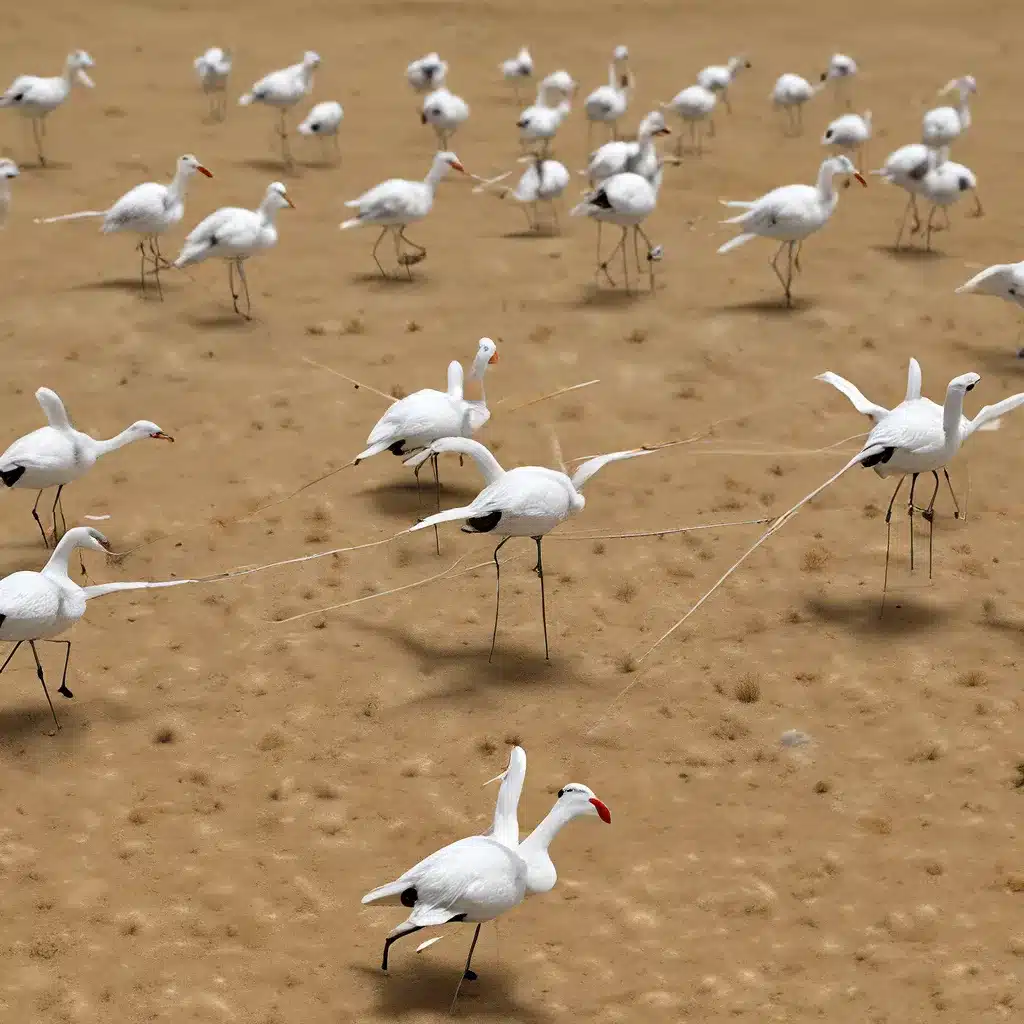
In the rapidly evolving world of sensor networks and the Internet of Things (IoT), the coordination and deployment of sensor nodes are critical challenges. Conventional approaches often fall short in addressing the dynamic and complex nature of these networks. However, researchers have been exploring innovative solutions inspired by the natural world, leading to the development of bioinspired flocking algorithms for sensor network coordination.
Understanding Bioinspired Flocking Algorithms
Bioinspired flocking algorithms draw inspiration from the collective behaviors observed in natural systems, such as the coordinated movements of flocks of birds or schools of fish. These algorithms leverage the principles of self-organization, distributed decision-making, and local interactions to enable sensor nodes to coordinate their movements and behaviors without the need for centralized control.
The key idea behind bioinspired flocking algorithms is to emulate the three basic rules that govern the collective behavior of natural flocks:
- Cohesion: Sensor nodes are attracted to the average position of their neighboring nodes, maintaining a cohesive group.
- Separation: Sensor nodes maintain a minimum distance from their neighbors, preventing collisions and overcrowding.
- Alignment: Sensor nodes adjust their direction and speed to match the average direction and speed of their neighbors, ensuring coordinated movement.
By applying these rules, sensor nodes can self-organize into dynamic, adaptive sensor networks that can respond to changes in the environment, obstacles, or task requirements.
Applications of Bioinspired Flocking Algorithms
Bioinspired flocking algorithms have a wide range of applications in the field of sensor networks and IoT, including:
1. Adaptive Sensor Deployments
In scenarios where sensor nodes need to cover a large or changing area, bioinspired flocking algorithms can enable self-directed and adaptive sensor deployments. Sensor nodes can autonomously navigate the environment, adjusting their positions to optimize coverage, maintain connectivity, and respond to dynamic changes.
2. Coordinated Monitoring and Tracking
Sensor networks employing bioinspired flocking algorithms can coordinate their movements to effectively monitor and track moving targets, such as wildlife or autonomous vehicles. The collective behavior of the sensor nodes allows for continuous surveillance and efficient data collection.
3. Resilient and Fault-tolerant Networks
Bioinspired flocking algorithms can contribute to the resilience and fault-tolerance of sensor networks. If individual sensor nodes fail or encounter obstacles, the remaining nodes can adapt their positions and behaviors to maintain network connectivity and continue their collective tasks.
4. Energy-efficient Operations
By leveraging the self-organizing and distributed decision-making capabilities of bioinspired flocking algorithms, sensor networks can optimize their energy consumption. Sensor nodes can dynamically adjust their movement and communication patterns to minimize energy expenditure while still achieving their objectives.
Designing Bioinspired Flocking Algorithms
The design of bioinspired flocking algorithms for sensor networks involves several key considerations:
- Network Topology: The choice of network topology, such as mesh, star, or hybrid, can impact the performance and scalability of the flocking algorithm.
- Communication Protocols: Efficient communication protocols, such as low-power wireless protocols or time-synchronized channel hopping, are crucial for enabling effective coordination among sensor nodes.
- Localization and Sensing: Accurate localization and sensing capabilities are essential for sensor nodes to perceive their environment and the positions of their neighbors.
- Optimization Algorithms: Incorporating optimization techniques, such as swarm intelligence or reinforcement learning, can enhance the performance and adaptability of the flocking algorithms.
- Security Measures: Addressing security vulnerabilities and cyber threats is crucial in sensor network deployments, requiring the integration of robust authentication, encryption, and anomaly detection mechanisms.
Challenges and Future Directions
While bioinspired flocking algorithms have shown promising results, there are still several challenges and areas for further research and development:
- Scalability and Complexity: Scaling these algorithms to large-scale, heterogeneous sensor networks while maintaining their efficiency and responsiveness is an ongoing challenge.
- Adaptability to Dynamic Environments: Enhancing the ability of flocking algorithms to adapt to rapidly changing environmental conditions and task requirements is crucial for real-world deployments.
- Robustness and Fault-tolerance: Improving the resilience of flocking algorithms to sensor node failures, communication disruptions, and malicious attacks is essential for ensuring reliable and trustworthy sensor networks.
- Energy Management: Developing energy-efficient flocking algorithms that can optimize the trade-off between sensor node coordination, data collection, and power consumption is a key priority.
- Validation and Benchmarking: Establishing standardized evaluation frameworks and performance metrics for bioinspired flocking algorithms will enable more rigorous comparisons and accelerate their adoption in the industry.
As the field of sensor networks and IoT continues to evolve, the exploration of bioinspired flocking algorithms promises to play a pivotal role in enabling scalable, resilient, and energy-efficient sensor deployments. By drawing inspiration from nature’s collective intelligence, researchers and practitioners can push the boundaries of what’s possible in the realm of coordinated sensor networks.
To learn more about the latest advancements in sensor network technologies and IoT, visit the Sensor Networks Organization website.